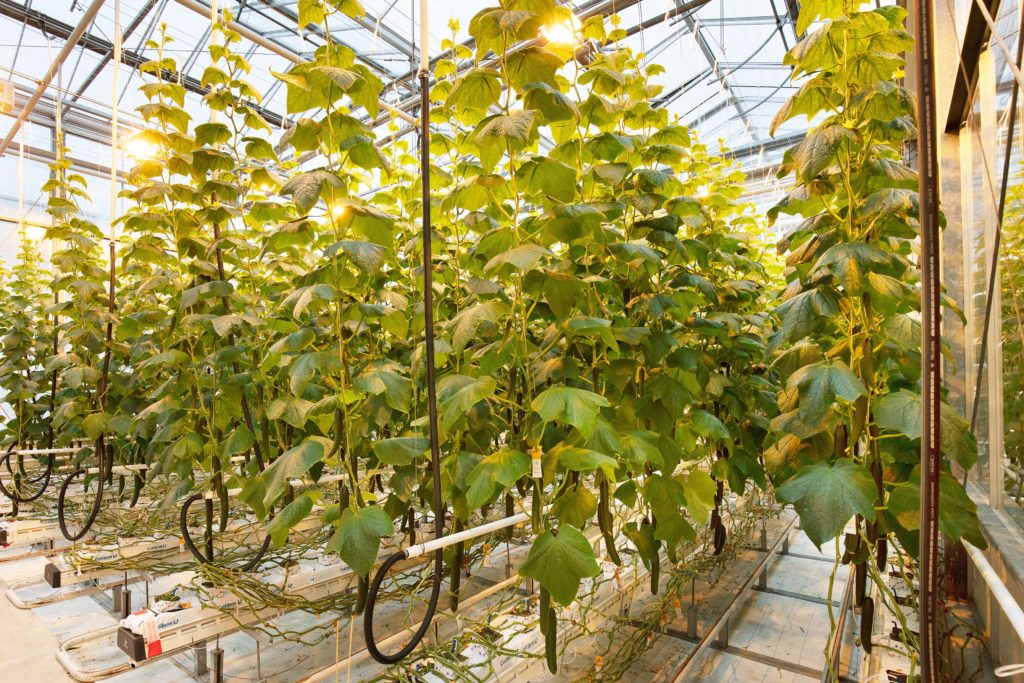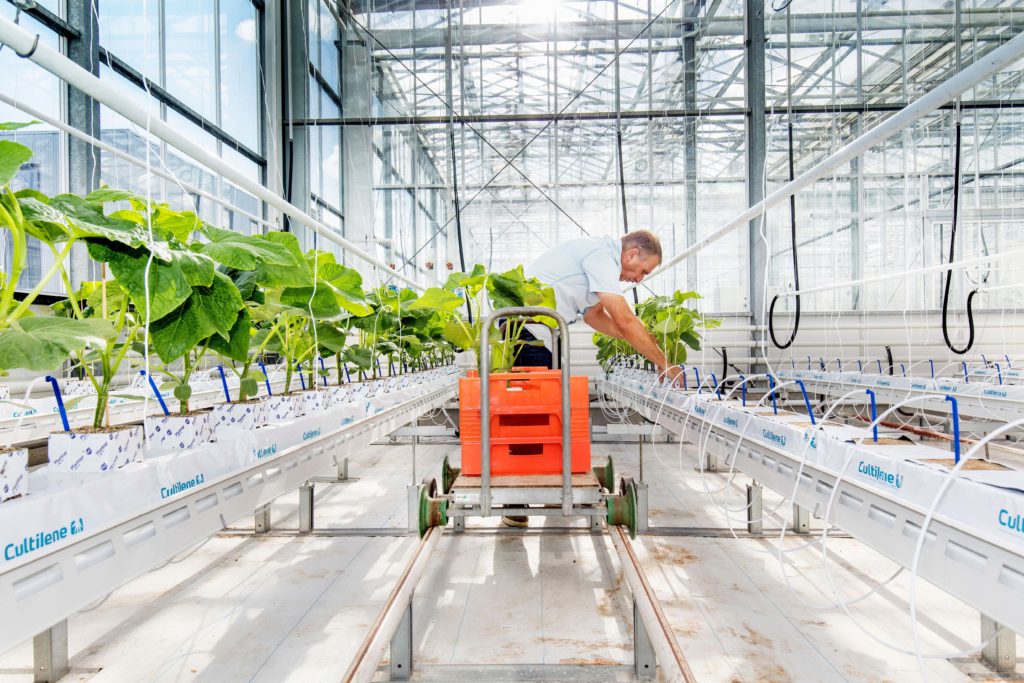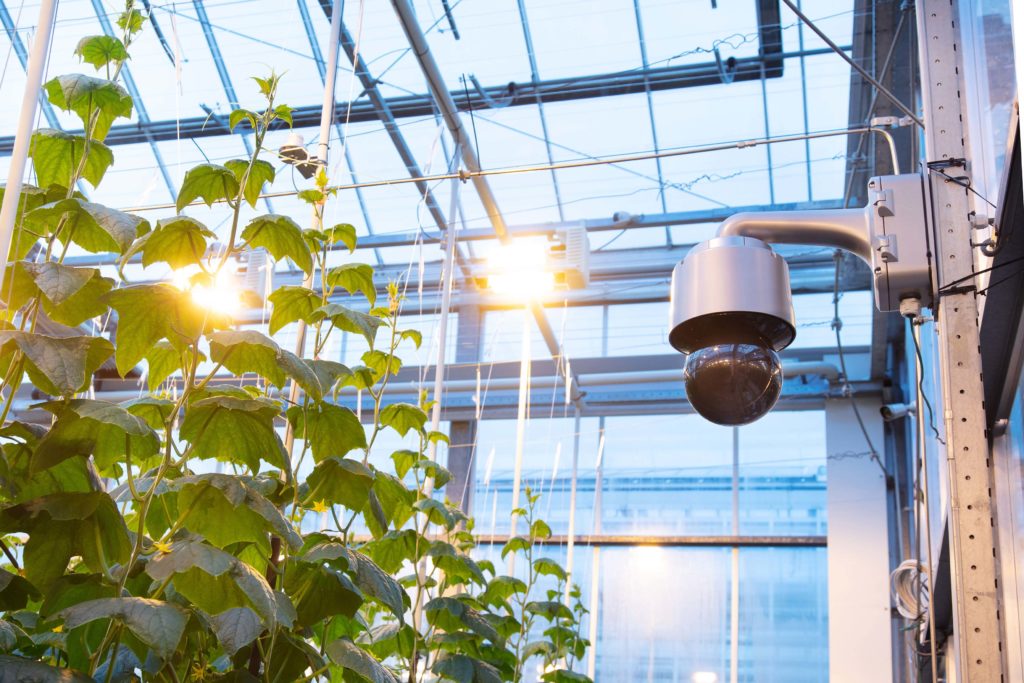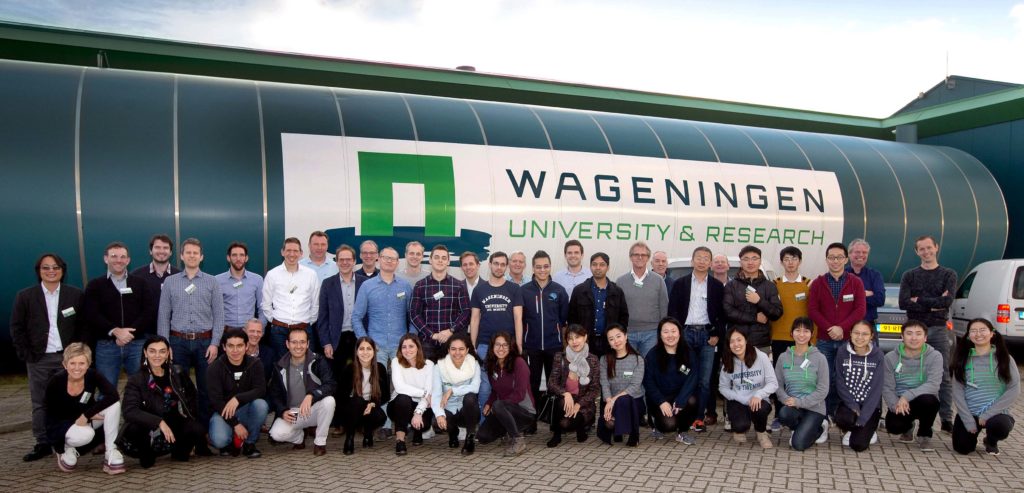Autonomous Greenhouse Challenge has recently ended, a global challenge conceived and realised by Wageningen University & Research and by the chinese internet provider Tencent, one of a kind…
Maria Luisa Doldi
Five teams, specialized in artificial intelligence, greenhouse technologies and horticulture, discussed the testing of the functioning of the autonomous control of the climatic conditions in a Dutch-type greenhouse. The experiment was carried out over a period of about four months on the cultivations of cucumber, a horticulture that grows relatively quickly and offers an abundant harvest. Basis for comparison: the results obtained by a team of Dutch farmers of cucumbers, with the same parameters and tools, but without autonomous control of climatic conditions in greenhouses. As Isabella Righini explains, a young researcher at the Wageningen University, the challenge was just an excuse to see how far along it was, at a global level, the knowledge of artificial intelligence and machine learning applied to indoor horticulture.
The experiment
Each participating team was entrusted with various compartments in a Dutch-type greenhouse, therefore highly automated. In each compartment the cucumber production system was developed according to common rules, but each team could modify some parameters, such as the planting density. The basic equipment for climate control in each compartment consisted of systems typically found in a Dutch production greenhouse: ventilation systems, heating systems with multiple circuits where hot water usually flows in pipes placed on the floor or near the plants, a misting system, a CO2 dosing system, a lighting system, mobile thermal screens, external weather station and, finally, a computer able to manage all the above functions. Where do artificial intelligence and autonomous control come into play? Isabella Righini explains: «Normally the decisions for the operation of climate control systems in a greenhouse – humidity, temperatures, irrigation to mention a few – are taken by technicians who, on the basis of standard protocols and solid experience, define the set points of the different parameters. In this experiment it was the algorithms developed by the five teams that autonomously managed the set points. Namely it was the algorithms and not the man that decided how to manage the entire climate system of the greenhouse». What has been tested here is therefore a decision-making and implementing system for indoor climate control applied to a specific crop.

The greenhouses for the experiment described are of the Dutch type, high-tech and highly automated, equipped with a wide range of sensors.
[su_quote]«None of the plant management operations, not even the harvesting, were conducted autonomously, but by a staff of technicians from our institute. For these operations human intervention is still necessary».[/su_quote]
Independent control of indoor climate? Possible, with profits
The winning team, Sonoma – Microsoft Research (yes, precisely those!), obtained harvests of 51,3 Kg/m² and profits of 25,04€ total against 49,4 Kg/m² and 21,46€ of the cultivation team. Apart from one team, all the others had results that did not diverge dramatically from those of the winning team. «This means that with the autonomous climate control it is possible to equal, and so far even slightly to outclass, the results of a standard cultivation». But the autonomous control is applied only to climate and to irrigation, Righini wishes to underline. «None of the plant management operations, not even the harvesting, were conducted autonomously, but by a staff of technicians from our institute. For these operations human intervention is still necessary». This does not mean that a more complete management which also integrates the “plant system” is not possible. In fact, the acquisition of more data from the indoor cultivation would definitely help algorithms in learning and therefore in improving predictive and decision-making power. The limited availability of complete datasets needed to instruct the algorithms was certainly a critical point of this first experiment, together with some simplifications necessary from an organizational point of view. Nevertheless, the results were encouraging, in terms of both productivity and profit. And in terms of efficiency? «In terms of efficiency there is still room for improvement, in the sense that the water, energy and carbon dioxide savings, have not been very different from what is already achieved in a standard Dutch crop. To be fair, it must also be said that the levels of efficiency in the use of resources in a Dutch standard cultivation are already very high and therefore difficult to overcome».
[su_box title=”A response to the challenges of the Millennium?” box_color=”#43634b”]Artificial intelligence as one of the possible answers to the challenges of the Millennium for agriculture? «The great advantage of these systems is where there are suitable facilities for cultivation, but the managerial competence is missing. I’m thinking, for example, of many areas of Asia where there is capital to invest in high-tech facilities but the know-how in cultivation that we have in Europe is lacking». Not by chance that among creators and supporters of this challenge there is the company Tencent, a large Chinese internet provider. In such a context, to have an algorithm able to make decisions independently and reduce human error is a great advantage and could make a real difference in terms of productivity and efficiency. «I also do not exclude – continues Righini – that with the development of algorithms we will succeed, even in a greenhouse already optimized like the standard Dutch one, in further and decisively improving not only productivity but also efficiency and use of resources. In this perspective, therefore, I consider artificial intelligence as a means to meet the challenges of the millennium, in the awareness, however, that these challenges can only be solved with a multilateral approach».[/su_box]
Cross-fertilization of knowledge
The algorithms learn from traditional cultivation techniques, but the reverse is also true. The algorithms have computational and predictive abilities that allow to consider many factors and different scenarios at the same time and therefore define an optimization strategy for the achievement of set targets (eg: high profit). «The algorithms took decisions that a traditional team would have hardly taken but that have proved to be successful» states Righini. Lighting management, for example. One of the reasons that contributed to the excellent results of the winning team was the management of lighting in relation to the production that could be achieved. For this first competition the price of electricity was kept constant and a little lower than real levels. The algorithm, properly instructed, was able to maximize the lighting strategy, considering the price of electricity, and calculate the difference in productivity in relation to the cost of lighting. At the same time the algorithm has optimized the strategy taking into consideration the potentially limiting production factors (example: temperature, carbon dioxide enrichment). On the contrary, the human team has not adapted its strategy to change (example: new cost of electricity), but it has continued according to the rules dictated by its own experience and by standard procedures, being penalized in terms of productivity compared to the winning team Sonoma. In the end, the farmers team concluded that a reinterpretation of lighting management and therefore also of planting density, in view of electricity costs, could have positive effects on results. This reveals that in the future, the algorithms will be able to monitor the variable prices of resources, maximizing their use where the cost-benefit ratio is positive and at the same time considering a number of factors regarded as relevant for the achievement of objectives set. This would therefore help “human intelligence” in taking difficult decisions.
[su_box title=”Artificial intelligence also enters Italian greenhouses” box_color=”#43634b”]Sfera is a very young 13-hectare greenhouse in the province of Grosseto. It was founded in 2017 and it was born as a high-tech, Dutch-style greenhouse. It is specialized in the cultivation of lettuce, aromatic herbs and especially tomatoes, all in hydroponic cultivation. «Hydroponics has been chosen – explains Luigi Galimberti, CEO and founder of Sfera – because it satisfies very well one of the main problems of today’s agriculture, soil consumption. Moreover, in indoor cultivation, it allows to eliminate the need for herbicides and more easily monitor water consumption, nutrients and pesticides. In fact, we produce a kg of tomatoes with two liters of water while up to 75 liters are used in the field. And of these two liters of water, 80% comes from rainwater». Not only. The irrigation system is closed-loop: the excess water is reused after sterilization and recovery of nutrients not absorbed by the plant. It is already precision horticulture, but Galimberti wants to go further: «In 2019 we will participate in 14 research projects, one of which deals with the introduction of artificial intelligence in greenhouses for the autonomous control of certain functions». Also Sfera, therefore, an Italian high-tech greenhouse, is moving towards the use of artificial intelligence, in the promise of greater environmental and economic sustainability.[/su_box]
From experiment to practice
How long is the step between experimentation and practical application of artificial intelligence in climate management in a greenhouse? «There are already applications on the market that can handle a small part of indoor climate control. More complete systems, like those experimented now, are not available yet. Nevertheless, the step towards the practical application of these systems is also very short, given that, for example, one of the algorithms developed will soon be offered on the market as a service to horticulture». Of course it will be necessary to monitor the first applications, supply the algorithms with a wider data set and improve their performance, but these systems can already enter the market and be integrated in Dutch-type greenhouses. This opens up a niche business that leads greenhouse producers and horticulture/floriculture to meet internet solutions and IoT providers.
Autonomous Greenhouse Challenge http://www.autonomousgreenhouses.com.






